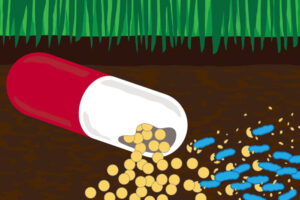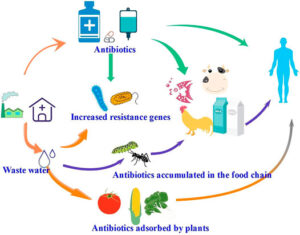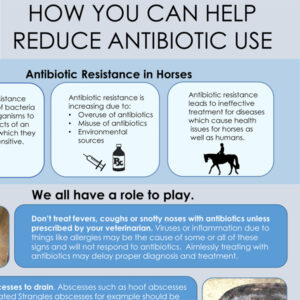One of the major breakthrough discoveries of the last century is “Antibiotics” that represent a wide range of medication that significantly changed the treatment of a large array of microbial infections. During period between the 1940s and early 1970s, the developing modern pharmaceutical industry, commercialized over 160 new antibiotics and semi-synthetic derivatives molecules. However, increased and unjustifiable consumption of antibiotics has led to an exposure of bacterial, plant, and animal communities and ecosystems to a large amount of antibiotic residues.

(picture courtesy: antibiotic pollution – Bing images)
What do we know about antibiotic residues in environment?
• The occurrence of antibiotic residues in the environment is a result of various patterns of antibiotic use by humans, commonly directed towards fighting against bacterial infections and for livestock production.
• Global statistics in 2010 report that consumption of antibiotics in animal husbandry is approximately 63,151 tons which is much higher than in human medicine. It is projected that antibiotic consumption by livestock will rise by 67% by 2030.
• Excessive antibiotics used in human and animal therapy accumulate in the environment, contaminating soils, waters, plants, etc. Depending on the class of drugs, 40–90% of the administered antibiotic dose is excreted in the feces and urine as parent compound – in the active form.
• Limitless use of antibiotics in animal farming leads to agro-ecosystem contamination through the application of antibiotic contaminated manure on the agricultural lands as fertilizer and the irrigation of crops with antibiotic-waste water.
• Another concern arises from the improper disposal of unused antibiotic medicinal products by discharging them into the sewage systems that may flood or overflow and contaminate fresh water bodies and fertile soil.
What are the effects of antibiotic pollution?
• Antibiotic residues when consumed through contaminated food and water cause negative effects on biota at different trophic levels and on human health.
• In the environment, antibiotics favour microbial antibiotic resistance that contribute to the increase in resistant bacterial populations. This maintains selective pressure that causes the development and/or dissemination of antibiotic resistance in different infectious bacterial species.
• Consumption of antibiotic contaminated water affects various animals by damaging their reproductive and digestive systems. Bioaccumulation and biomagnification are major issues of concern in natural ecosystems.
• Antibiotic residues absorbed by plants, interfere with physiological processes, and cause potential eco-toxicological effects on photosynthesis, chloroplast gene expression, cell proliferation, and mitochondrial oxidative stress response.
• Additionally, the concentrations of antibiotics found in agricultural soils and manure, delay germination, reduce biomass, and diminish crop yield.
• Moreover, antibiotic residues alter the human microbiome (good bacteria in gut) and cause health disturbances, such as frequent infections, allergic reactions, chronic toxic effects after prolonged exposure, and disruption of digestive system functions.
• It is known that increased antibiotic consumption causes failure of treatments in human medicine (infections caused by antibiotic resistant bacteria), increasing duration of illness, morbidity, and mortality.

(picture courtesy: antibiotics pollution – Bing images)
What can we do to limit antibiotic pollution?
• Prudent use of antibiotics in humans and animals could limit the favourable selective pressure on resistant pathogens and control development of environmental resistance.
• The antibiotic discharges from the pharmaceutical industry release higher concentrations in specific locations at certain times than other pollution sources and can pose a significant ecological and public health concern. Towards this purpose, several leading pharmaceutical companies signed an antimicrobial-resistance roadmap having the environmental management of antibiotic-related production as a central objective theme.
• Monitoring and investigating the antibiotic residue levels in soil and water by collecting samples and establishing standard regulating discharge levels can reduce contamination of natural resources.
• Globally, legislative measures should target specific high-risk environments with elevated concentrations of antibiotics, such as disposal of antibiotics from the hospitals and pharmaceutical industries.

(picture courtesy: reducing antibiotic pollution – Bing images)
The benefits and importance for the use of antibiotics against bacterial infectious diseases is unquestionable. However, the effects of antibiotic residues in the environment must be considered, given their potential to maintain, cause, and disseminate antibiotic resistance, and to exert a number of negative effects on the entire ecosystem. There is a need to improve our knowledge and take timely protective measures to avoid irreversible consequences due to the impact of antibiotic residues on the environment. Antibiotic resistance and pollution are a global problem and especially rampant in the developing world. Therefore, international cooperation, data-sharing, execution of appropriate legislation, as well as world-wide consistent regulations and policies are essential and need of the hour to fight against unreasonable and excessive use of antibiotics.
